Every year, millions of folks around the globe go for Philips TVs, making them one of the hottest TV brands out there. This whole journey kicked off over 130 years back in the Netherlands, starting with something as simple as light bulbs.
It took Philips a good chunk of years to jump into making TVs. The first TV they dropped in the ’50s was this tiny, black-and-white, like a wood box. Fast forward 70 years and the hard work has paid off big time. Now, we get to kick back with top-notch OLED Philips TVs in our living rooms.
So, let’s learn about Philips’ history and see how its TVs have changed from vintage to modern. I had to find old Philips TVs in collectors’ and vintage markets to show you.
Creating the Philips brand
The Philips brand started its journey in 1891 in the Netherlands. It was started by a guy named Frederik Philips and his son Gerard.
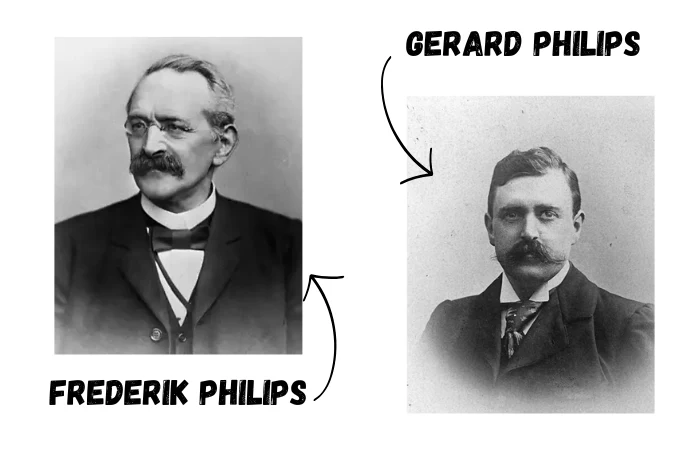
Back then, electricity was just starting to light up everyday life. Philips bulbs were a game-changer. By 1910, Philips had grown into one of the biggest light bulb makers in Europe.
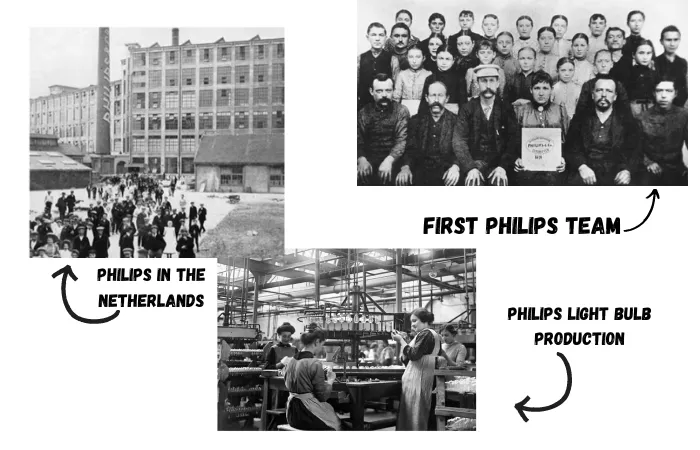
Fun fact: In 1914, Philips set up its own research lab, Philips NatLab. This place was huge for the company’s tech developments. It’s where a bunch of cool innovations that made Philips famous worldwide were born.

In the 1930s, the Philishave razor hit the scene. Thanks to its slick design and ease of use, it was a smash hit. Since its launch in 1939, Philips has been selling about 700 Philishave razors an hour.
In 1940, Philips’ bosses got wind that Germany was going to invade the Netherlands the next day. Getting ready for this, Anton Philips and his son-in-law, Frans Otten, and other Philips family members bolted to the USA, taking a big chunk of the company’s cash with them. Operating in the US as the North American Philips Company, they kept the business running throughout the war.
After 1945, Philips broadened its product lineup, including stuff like UV light for killing germs, fluorescent tubes, new magnetic materials and ceramics, hearing aids, and record players. They even shrunk and spiced up radios. But the real big deal was creating TV for the masses in 1949.
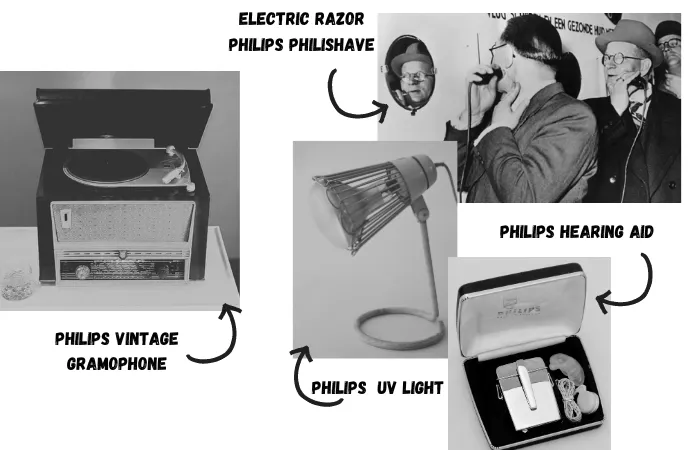
The first Philips TV
The first Philips TV hit the market in 1950, dubbed “The Kennel.” This model stood out with its 22-centimeter picture tube and a 4-channel tuner. It had a dark wood body with a lighter wood trim around it. The screen was white, framed by an oval white border, which looked cool against the wood. Below the screen, there was a grille for cooling and some black switches.
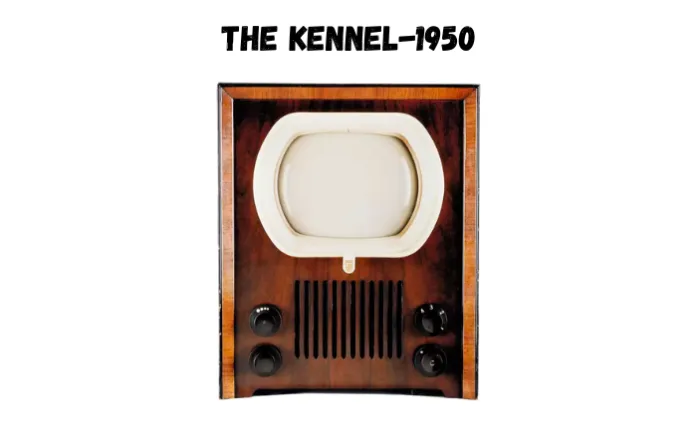
The design and features of this TV were a big deal back then. And as you can guess, Philips TVs kept improving over the years.
From vintage to modern Philips TVs
Since the 50s, Philips has actively created new TV models. And with each decade, they’ve made some big leaps. For a long time, they were just black-and-white wooden boxes, sometimes even on legs.
By the way, Philips doesn’t give a full rundown of how their TVs evolved, so I had to dig through vintage shops and collectors’ hauls to show you. So, this isn’t every TV Philips made. But it’s enough to get a grip on Philips TV history. I’ve broken it down by decades to show how they changed.
1950-1960:
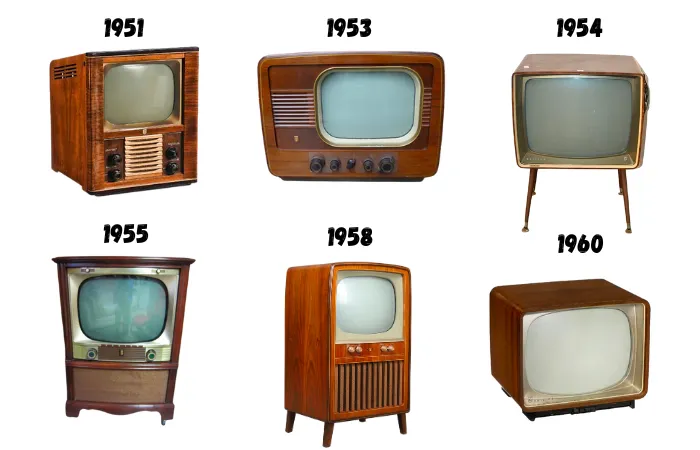
After launching the first “The Kennel,” Philips kept making their “wooden black-and-white boxes.” This decade, they started rolling out two design vibes: square TVs and TVs on legs. In ’51, right after their first TV, Philips freshened up the design a bit. The air vent turned white, and the screen got a tad bigger.
Then the TVs started looking like microwaves, with the screen to the right and switches lined up below. The leggy TV was all over magazines back then. And the screens got way bigger, with buttons on the side.
In 1956, Philips made the first experimental color TV transmission. The CCIR International Advisory Board was invited to this. The first series of color receivers was given the generation number K1.
After a while, TVs were bulky like cabinets. Philips wrapped up the decade with a sleek TV, looking pretty stylish for its time. Its wooden body was metallic around the screen, and buttons almost hidden under the TV.
1960-1970:
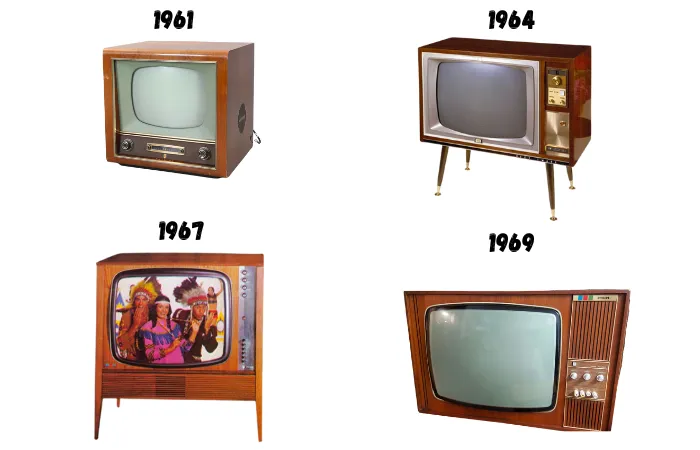
At first glance, it might seem like the design didn’t change much in this decade. Yes, they kept the wooden body but added some details. The buttons got more interesting, some silver, some with gold-like inserts.
In 1967, a full-fledged color TV came out, marking the first generation of color TVs. This wasn’t just an experimental version but a full-on color TV. And the color models that followed were tagged with “Color.” They also had switches for color and brightness adjustments.
1970-1980:
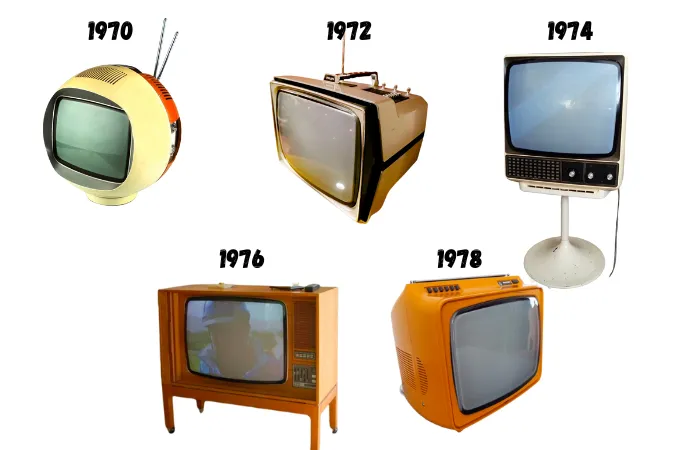
During the 1970s to 1980s, Philips TVs shifted from the chunky 50s and 60s models with wooden frames to sleeker, more modern designs using plastic and metal. The look got streamlined, with slimmer profiles and simpler finishes, focusing on functionality. The screens got bigger, the picture quality got better, and the remote control came into play.
But that doesn’t mean they ditched the wooden-frame models entirely. They stuck around but also got the image quality and remote control upgrades.
1980-1990:
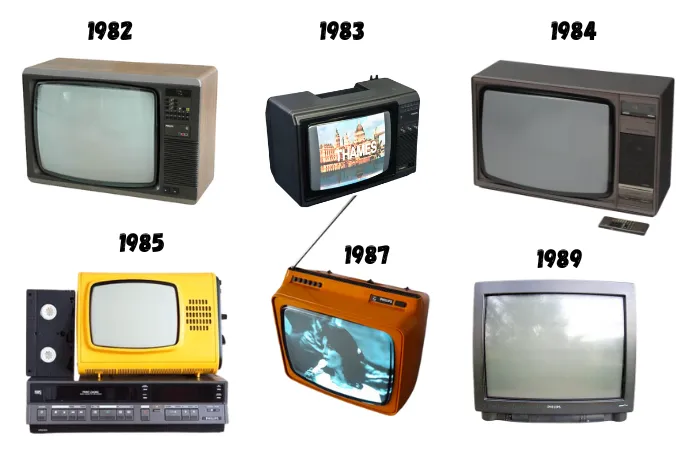
In the 1980s and 1990s, Philips TVs underwent significant technological and design changes. This era was marked by a shift from using simple semiconductors to incorporating integrated circuits, making TVs much smarter and more functional. These chips enabled TVs to process more information, providing better picture and sound quality.
And, of course, the design was updated. The screens got bigger. Philips had started moving away from heavy wooden casings in the previous decade, and from the ’80s onwards, they continued to make TVs lighter and thinner thanks to the use of plastic.
Philips TVs began offering various new features, such as the ability to connect to other devices, expanding their usability beyond just watching TV shows.
1990-2000:
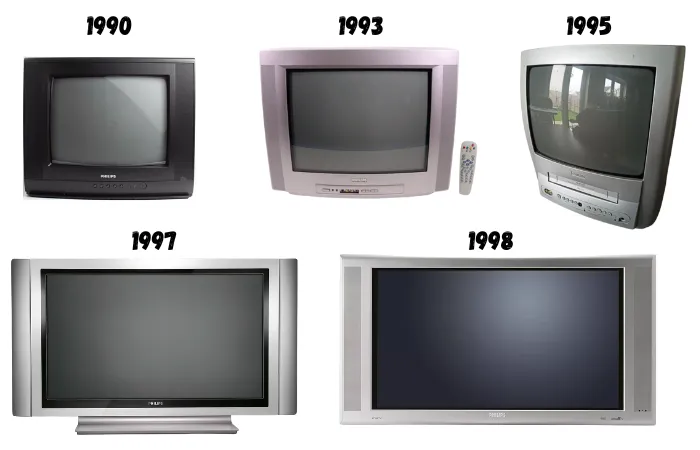
The late ’80s and early ’90s were my least favorite design era for those square black boxes. That’s the only way I can describe the TVs back then. From cool, stylish, bright TVs, they switched to huge black plastic boxes.
A bit later, around 1993, Philips started to roll out light gray TVs, which looked a bit better.
In 1997, Philips showcased the first large commercial flat-panel TV at CES and CeBIT, using Fujitsu panels. It was released as the Philips 42PW9962. You could buy it at four Sears stores in the US for $14,999. And that’s how the plasma era began.
2000-2010:
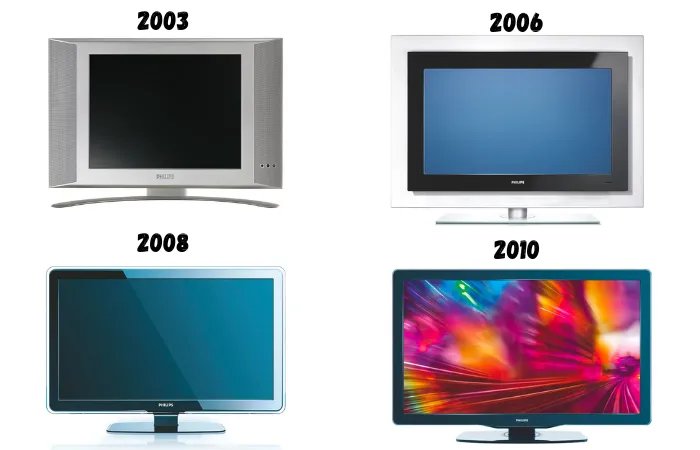
They kicked off with Ambilight in 2004, a feature that creates a halo of light around the TV, matching the colors on the screen and making viewing more immersive.
Designs got even more modern and minimalist. TVs got thinner and lighter, with slim frames around the screen, making them almost all screen.
2010-2024:
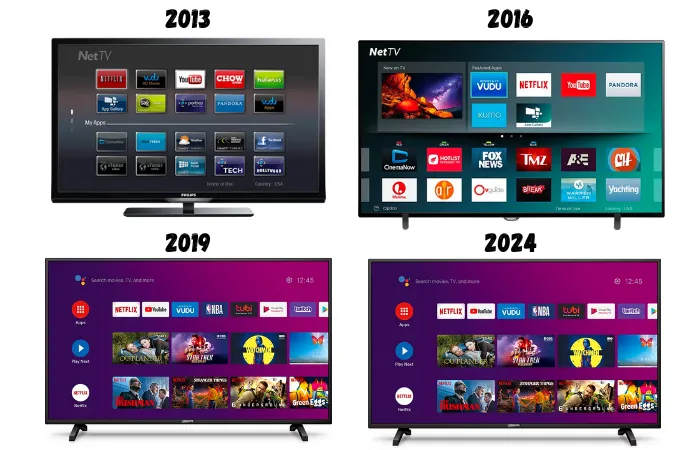
This period feels pretty familiar to us. Philips TVs kept up with innovations, bringing in 4K UHD resolution that made the picture even sharper and more detailed. HDR (High Dynamic Range) support came into play, boosting contrast and color and making images look more real.
Designs got even sleeker, with almost invisible bezels, giving the screen a boundless look. TVs got thinner. Some were even designed to hang on the wall like a piece of art.
The jump to OLED tech delivered outstanding contrast and true blacks, while Ambilight now adjusts to what’s on-screen and music and video games.
Smart TV features expanded, offering voice control, integration with home assistants like Alexa and Google Assistant, and seamless syncing with mobile devices.
Philips TV factory
The initial Philips TV manufacturing was rooted in the Netherlands. By the early 1990s, the TV manufacturing industry began embracing globalization, leading to a significant shift of factories to China, attracted by its cost-effective labor force.
The early 2010s witnessed a crisis in the industry. With fierce market competition, rapidly evolving technologies, and just a couple of years old, TVs were already lagging behind newer models. This situation drove Philips into losses in their TV manufacturing venture. During this time, many established brands started exiting this business domain. Besides Philips, renowned brands like Toshiba, Sharp, Grundig, and Thompson also stepped away from TV manufacturing.
In 2012, Philips divested its TV business, stepping out of this sector. As per the licensing agreements, Philips continues to earn revenue from the brand usage and maintains a singular online platform where licensees post information about the TVs. This arrangement allows licensees to market their products under the Philips name, leaving many consumers initially unaware that Philips no longer manufactures TVs.
Philips TVs are now produced by two companies that acquired the license for TV manufacturing:
- In North America, Funai Electric Co., Ltd. has been handling the manufacturing and sales of Philips-branded TVs since 2008.
- In Europe, TP Vision has been manufacturing and selling Philips-branded TVs since 2012.
Initially, Funai acted as a sales agent for Philips, distributing TVs in the USA and Canada. By 2012, as Philips brand licensing became an issue, Funai obtained a license to manufacture and sell Philips-branded TVs, including television sets, independently.
Funai is known for making lots of different electronics for different brands. They mostly make stuff in China. However, because of some issues between the US and China, Funai is considering making TVs in places like Thailand, Vietnam, or Mexico instead.
Now, regarding the European market, TP Vision emerged as a joint venture initially owned by China’s TPV Technology – 70% and Philips from the Netherlands – 30%. In 2014, significant corporate changes occurred when TPV Technology acquired the remaining shares of TP Vision from Philips, becoming the company’s sole owner.
TP Vision has a big setup with 13 factories. Five of these are in countries like Russia, Mexico, Argentina, Brazil, and Poland. These add to their seven factories in China that make TVs and other stuff.





